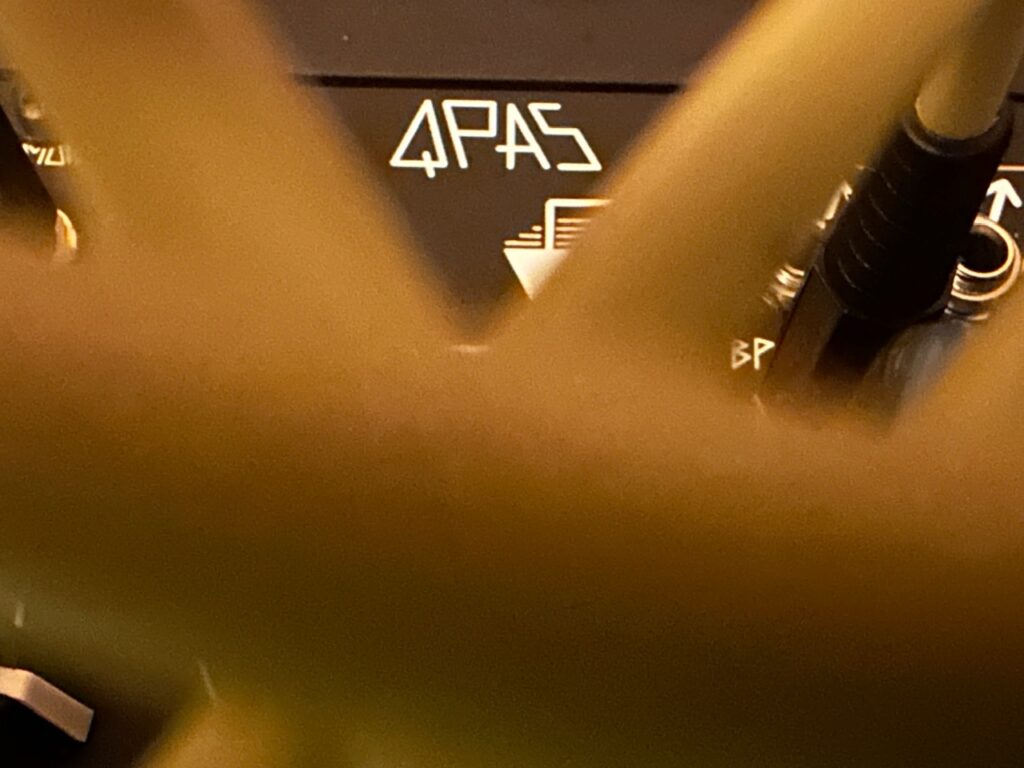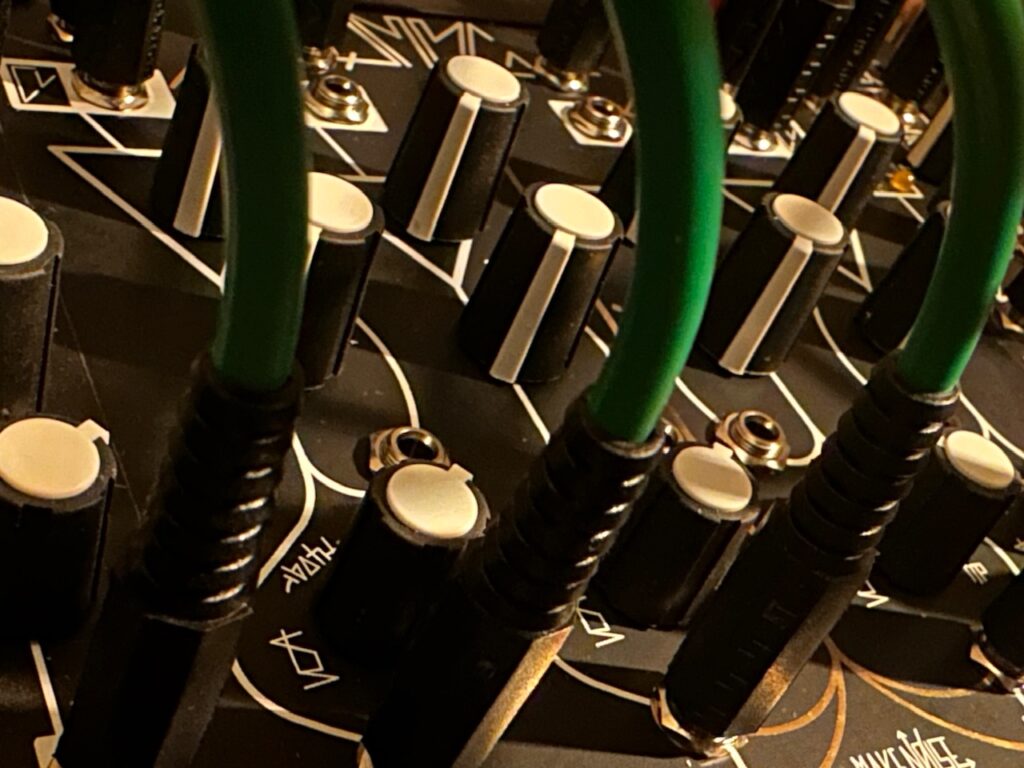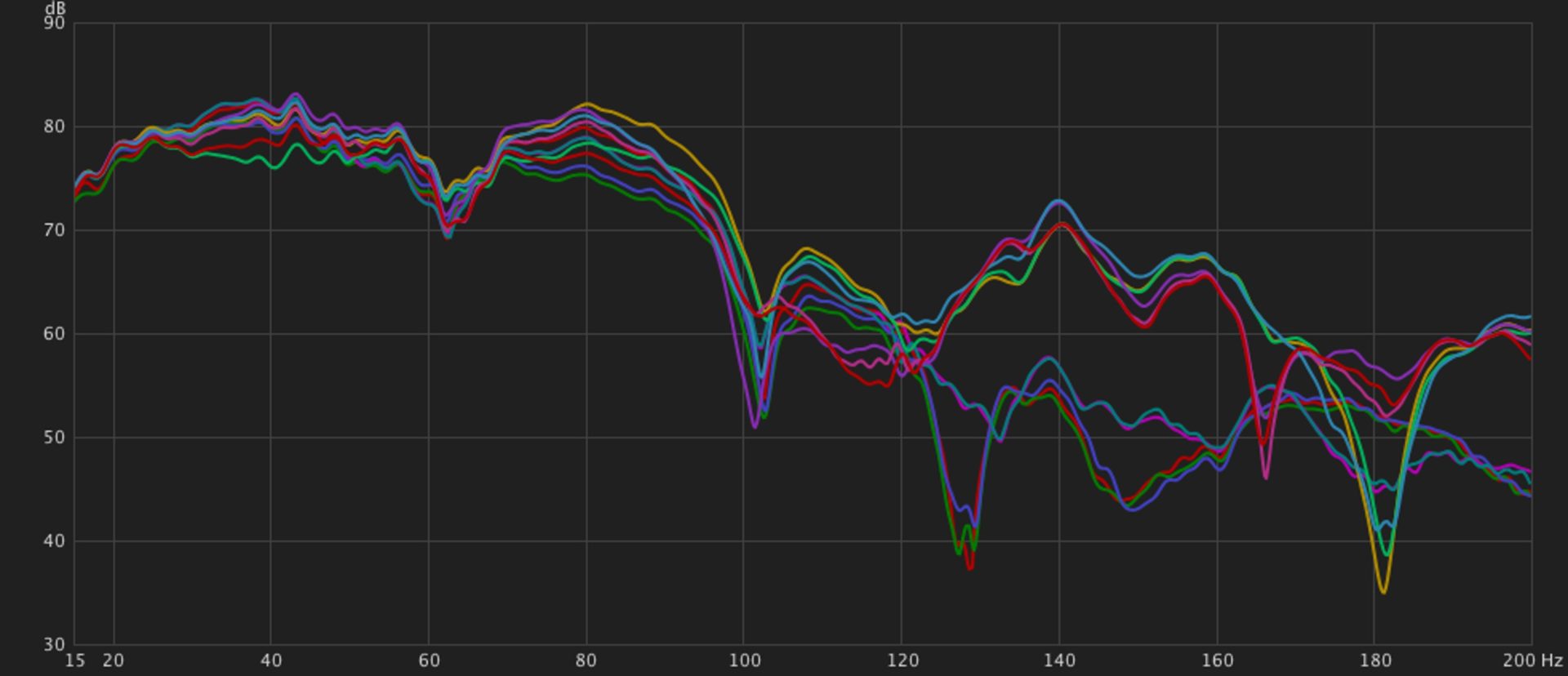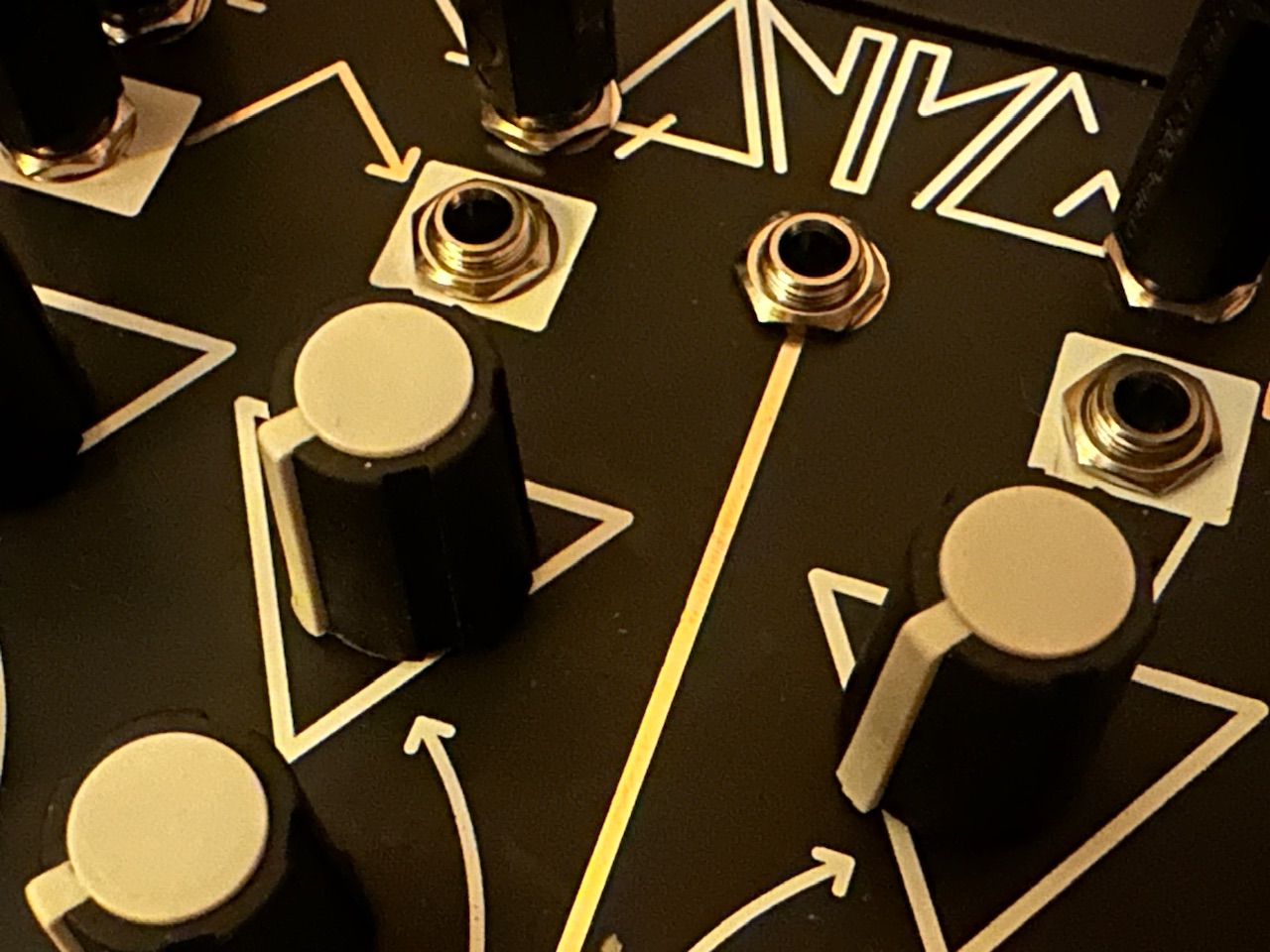I always seem to find myself both perplexed and captivated by my Make Noise case. Because it’s a relatively small system that’s also a walled garden, modules are limited. I’ve always scoffed a bit at the idea that a small case can spurn on creativity in a way a big case can’t. That it forces you to make deliberate choices and patch in new ways to get the most of what you do have. But with my Make Noise case that’s at least partially true. I’m not sure whether it’s the Make Noise ethos or the small case, but I find myself having to really think through patches. Even normally basic tasks, like mixing, can be a logistics challenge while patching. There are a finite number of jacks to plug, and a static few modules to work with.
After a short hiatus, the Make Noise case is back in order and with a couple of new additions. I needed the case for a travel synth, and I’ve been crazy busy since my return. I made a trip to Asheville and had a really great day at the QMMG in-store event, and I recorded a couple of tracks on the main synth and another on my new Make Noise 0-Series setup since, but I’ve straight procrastinated wrestling with the shitty M2.5 screws and sliding nuts Make Noise uses with their cases.1 Post-trip I also decided, after seeing rack rash on a couple of the travel synth modules from being screwed in without washers exactly once, that I was going to wait until I received longer screws and nylon washers to mitigate any further scratching issues. Rack rash isn’t the end of the world, but being that I move modules in and out quickly, I like for them to retain resale value, especially when it comes to factors I can control.
Once I got the case assembled I went to work. Not on creating a beautiful patch to share with the world (even if I do think the results are beautiful), but on seeing just exactly why QMMG generates the hype it does. How does it ring? Beautifully. How does it squelch? Loudly. How does it sweep? Lovely. How does it bleed? Perfectly.
I set out to re-create one of my favorite patches that encourages vactrol bleed, allowing subsequent pitches of a sequence to be heard after a step has been passed, and before the vactrol has had the time to close the gate of the LPG. These notes aren’t being gated, but sneak through at an audible level anyways as a byproduct of the slow vactrol response. Walker describes these bled notes as “[N]ot ghosts, exactly, because they have yet to exist. They’re more like premonitions or ideas; bulbs casting light on possible futures inscribed in the sequence.” Although I’ve written about this technique before, and use it often, I couldn’t resist using it with the new QMMG. I wanted to hear the vactrols for everything they are, not try and cover them up or hide their true nature. After all, Tony Rolando allegedly has said that the vactrols are the heart of QMMG, and it bleeds. It’s the module’s logo. Vactrol bleed is at the center of QMMG’s identity, and I wanted to hear it.

There are also 3 other voices in the patch. The first is a moderately modulated QPAS, pinging quietly in the background, sounding beautiful as ever. The second is the sine wave of the first DPO oscillator ring modulating the second sine oscillator of DPO in the modDemix. It only hits very infrequently, and is NOT passed through a LPG, but a VCA so that it does not ring past the current step. The third is a ripping bass part that absolutely does not fit with the rest of the patch in any way. What I was attempting did not work. Instead, I got a killer bass sequence that is contemporaneously always staying the same, yet always changing at the same time. This bass line is created with the STO’s Variable Shape output into QPAS in LP mode, with a completely ungated sequence on the X channel, which is clocked by alternating outputs on Tempi. Both of the clocks used were run at different rates, as well as having stops in Rene at different rates.


This patch is not perfect. It’s not even very good. But it’s a peek into the process understanding of how QMMG works, while trying to have a little fun at the same time. I also inadvertently learned a new bass technique for my patching library. If I were to expand on this patch, I’d certainly unmarry the bass part from the rest for its own track, but other problems exist too.
The delay is too forward in the mix. With the initial sequence and its premonitions, QPAS’ pinging, and ring modulated sine waves all going through the delay, it got very busy in the mix, sometimes obscuring the bleeding vactrols of QMMG, which was the entire point of the patch in the first place. I also ran into an inherent problem with using DXG, even as just a mixer. I’ve had my fair share of complaints about the DXG’s inability to not mix. I feel like it’s an extremely important piece of gear in the history of modern Eurorack, but with some serious flaws. It’s the first stereo LPG in existence (as far as I can tell), and made by the LPG legends at Make Noise who made Optomix (two versions), QMMG (two versions), LxD, MMG, RxMx, Dynamix, and the brilliant transistor-based LPG in the Strega, yet despite its importance and lineage DXG is a tragically imperfect piece of kit. As a LPG mixer, it raises and lowers both the volume and the harmonic content of the input simultaneously, more closely mimicking how sounds work in nature. As a sound gets louder, there is more higher harmonic content. As that sound gets softer, it loses harmonic content. And that’s great when you want to create sounds, but when you mix already created sounds together you generally want to control the volume, while leaving the harmonic content intact at every level. The DXG doesn’t allow you to do that. I noticed this phenomena most directly when trying to mix a full wet Mimeophon return signal on Ch 1 from with the dry signal on Ch 2 using its send outputs. Because I didn’t want what amounts to a 50/50 dry/wet mix, I wanted my repeats much softer than the dry signal, the repeats from Mimeophon were not only quieter (good) when patched through the DXG, but also near bereft of its upper harmonic content (very bad). All that pretty Color and Halo being added in Mimeophon, shat upon by the DXG. Although I was able to mitigate this problem by patching the output of the full mixer, rather than only the Ch 2 send output, to Mimeophon, and patching it as an insert using Mimeophon’s mix control rather than as an AUX send with a full wet return as originally intended, this necessary workaround seems to greatly minimize the utility of the Ch 2 send outputs. Traditionally, one would patch the dry signal to Ch 2, the Ch 2 send outputs to Mimeophon with its outputs patched back to Ch 1, and mixed with the original dry signal at the mixer’s sum output. However, losing valuable harmonic content from Mimeophon’s output when I only want to lose volume makes that a far less than ideal use case scenario for me. They work great as mixers, but only if you want to mix inputs at relatively even, loud levels.
Overall I’m pleased with the patch. Not the outcome, per se, but that the process of patching taught a couple of valuable lessons about the gear I’m using so that I might better use it in the future. The QMMG sounds fantastic, both as a LPG and a filter, and I’m slowly learning how to control the Final output of the DPO. Not every patch will turn out well, and that’s okay.
Modules Used:
Tempi
Rene’ V2
DPO
QPAS
STO
Maths
QMMG
Function
Wogglebug
modDemix
Mimeophon
DXG
X-Pan
Performed and recorded in 1 take in AUM on iPad via the Arturia AudioFuse.
- I’m clearly a Make Noise enthusiast, but that by no means makes their products perfect. There is no good excuse for sliding nuts and un-washered M2.5 screws in an otherwise premium case. ↩︎

